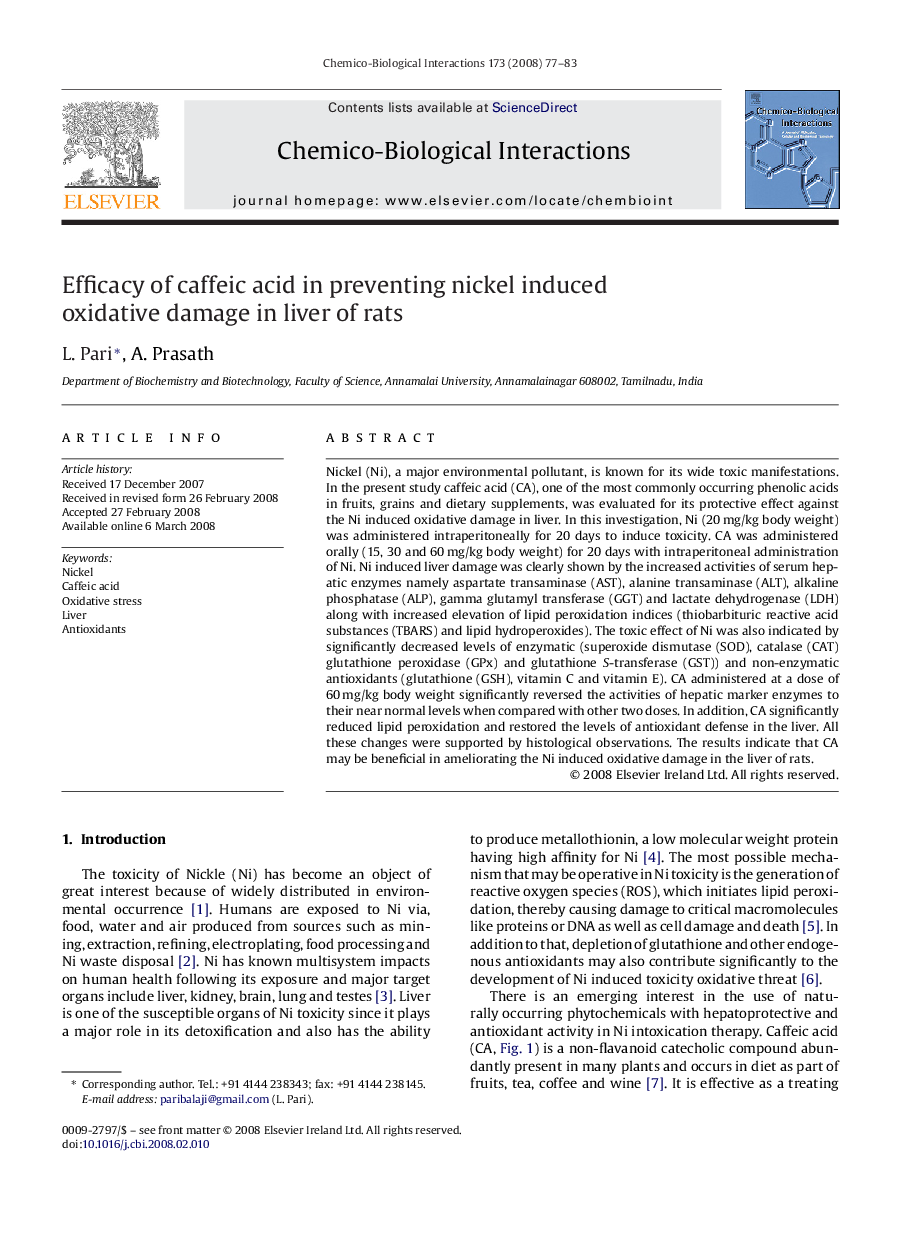| Article ID | Journal | Published Year | Pages | File Type |
|---|---|---|---|---|
| 2581883 | Chemico-Biological Interactions | 2008 | 7 Pages |
Abstract
Nickel (Ni), a major environmental pollutant, is known for its wide toxic manifestations. In the present study caffeic acid (CA), one of the most commonly occurring phenolic acids in fruits, grains and dietary supplements, was evaluated for its protective effect against the Ni induced oxidative damage in liver. In this investigation, Ni (20Â mg/kg body weight) was administered intraperitoneally for 20 days to induce toxicity. CA was administered orally (15, 30 and 60Â mg/kg body weight) for 20 days with intraperitoneal administration of Ni. Ni induced liver damage was clearly shown by the increased activities of serum hepatic enzymes namely aspartate transaminase (AST), alanine transaminase (ALT), alkaline phosphatase (ALP), gamma glutamyl transferase (GGT) and lactate dehydrogenase (LDH) along with increased elevation of lipid peroxidation indices (thiobarbituric reactive acid substances (TBARS) and lipid hydroperoxides). The toxic effect of Ni was also indicated by significantly decreased levels of enzymatic (superoxide dismutase (SOD), catalase (CAT) glutathione peroxidase (GPx) and glutathione S-transferase (GST)) and non-enzymatic antioxidants (glutathione (GSH), vitamin C and vitamin E). CA administered at a dose of 60Â mg/kg body weight significantly reversed the activities of hepatic marker enzymes to their near normal levels when compared with other two doses. In addition, CA significantly reduced lipid peroxidation and restored the levels of antioxidant defense in the liver. All these changes were supported by histological observations. The results indicate that CA may be beneficial in ameliorating the Ni induced oxidative damage in the liver of rats.
Related Topics
Life Sciences
Environmental Science
Health, Toxicology and Mutagenesis
Authors
L. Pari, A. Prasath,
